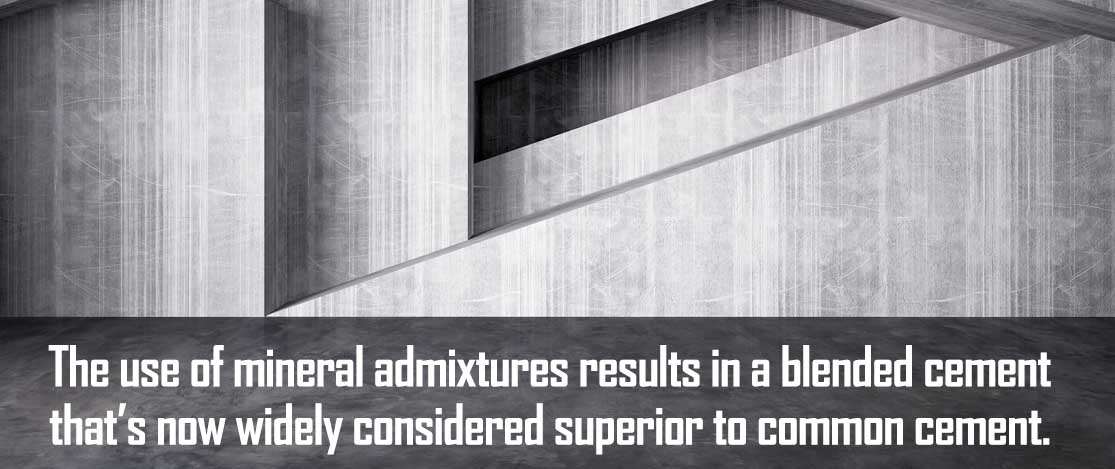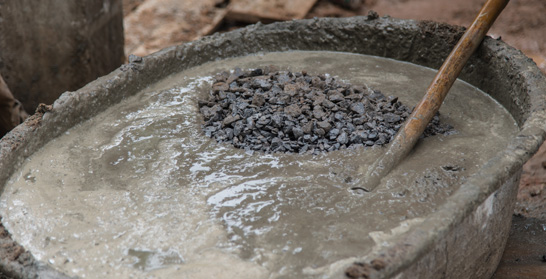Blended cement comes from a mix of OPC (Ordinary Portland cement) with additives such as fly ash, slag or silica fumes. These mineral admixtures result in cement that’s now widely considered superior to common cement.
Usage of blended concrete mix provides advantages in two important ways: technical and environmental.

Technical Advantages
Smoother: It provides a finer texture than OPC when mixed.
Strength: Fly ash and slag cement is significantly stronger than OPC after fully curing (more than 28 days), in both compressive and flexural stress. This depends in part on the proportions and quality of admixture. Silica fume cement cures in even less time, usually three to 28 days.
Permeability: The lower permeability of blended concrete extends its useful life and hardness by reducing penetration of aggressive water run-off compounds such as sulfates and chlorides, which have increased impact as ordinary cement ages. Silica fume cement allows only 20 percent of the permeability of OPC.
Thermal Stress: With ordinary cement, if temperature differences between the concrete surface and its interior are high, structural integrity is weakened and cracking can occur. This can happen with cold weather concreting, when concrete is mixed and poured while temperatures fall below 40 degrees. Adding blended concrete mixes can reduce peak temperatures and reduce the risk of thermal stress.
Alkali-Silica Reaction (ASR): Expansion and cracking of poured concrete can result from a reaction between the silica and the cement and alkaline elements in the water or soil. A mix of blended cement as either silica fume and slag, or silica fume and fly ash, sharply reduces problems related to ASR.
Environmental Advantages
Water Conservation: Lower water-cement ratios are used in construction, making it easier to work with and shape.
Energy Savings: Adding mineral admixtures such as slag, which is produced as a byproduct of other industrial processes, lowers the energy expenditure in producing overall quantities of OPC by around a megawatt per ton.
Conservation Of Resources: The mineral admixture of blended concrete mix produces the waste products of steel plants and coal power plants, among others. By using this waste in cement, it lowers the demand on other components like limestone, silica and clay, helping to preserve these natural resources.
Protecting The Environment: Cement is an energy-intensive product to manufacture, but it is essential to construction. The process may account for up to 7 percent of pollution, such as smog, greenhouse gases and emission from heating fuels such as coal. Using additives to reduce cement production also reduces pollution.
The Del Zotto family has been providing products and services to the concrete industry for more than 50 years. We are experts in precast concrete forms, and our equipment has always held a reputation for top quality. Call or stop by our facilities to see how we can help you.

